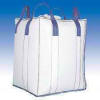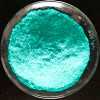| Anmol Chemicals is the pioneer manufacturers of Cupric Copper Chloride Dihydrate Anhydrous USP Grade & Cuprous Chloride, Pharmaceutical Excipients Food & Flavor chemicals in India. We offer Halal and Kosher Cupric Copper Chloride Dihydrate Anhydrous USP Grade & Cuprous Chloride made in an ISO9001, ISO22000 (FSSC22000) cGMP and GLP certified facility. Our group has several manufacturing facilities spread across the world, supported by toll manufacturers and representatives in UAE, Europe, USA, China and has several associated manufacturing facilities spread across India. All the Information on Physics, Chemistry, Applications, Uses and Technology on Manufacture of Cupric Copper Chloride Dihydrate Anhydrous USP Grade & Cuprous Chloride is in these pages. |
| The units have one or more of the certifications like FDA GMP, ISO 9001, ISO 22000, HACCP, REACH, Kosher & Halal |





Cuprous Chloride SDS GHS MSDS of Manufacturers
Cuprous Chloride CAS Number 8758-89-6, EINECS EC Number 231-842-9, Molecular Weight 99, Chemical Formula CuCl
Specifications of Cupric Copper Chloride Dihydrate Anhydrous & Cuprous Chloride Manufacturers
Cuprous Chloride SDS GHS, Safety Data Sheet
MSDS Sheet
1. Product Identification
Product Name & Other Names: Cuprous Chloride or Copper (I) Chloride.
CAS No.: 7758-89-6
EINECS EC Number: 231-842-9
Molecular Weight: 99.00
Chemical Formula: CuCl
Relevant uses and uses advised against (if any): Industrial Manufacturing.
2. Hazards Identification
GHS, Globally Harmonized System Classification in accordance with 29 CFR 1910
Classification according to Regulation (EC) No 1272/2008
Acute toxicity, Oral Category 4 (H302)
Skin irritation Category 2 (H315)
Serious eye damage Category 1 (H318)
Chronic aquatic toxicity (Category 1), (H410)
Labeling according Regulation (EC) No 1272/2008
GHS Label Elements  Marine Pollutant |
GHS Label Elements |
Signal Words: Danger
Hazard statements:
H302: Harmful if swallowed.
H315: Causes skin irritation.
H318: Causes serious eye damage.
H410: Very toxic to aquatic life with long lasting effects.
Precautionary statements:
P261: Avoid breathing dust/ fume/ gas/ mist/ vapors/ spray.
P262: Do not get in eyes, on skin, or on clothing.
P264: Wash skin thoroughly after handling.
P270: Do not eat, drink or smoke when using this product.
P273: Avoid release to the environment.
P280: Wear protective gloves/protective clothing/eye protection/face protection.
P330: Rinse mouth
P301+P312: IF SWALLOWED: Call a POISON CENTER or doctor/physician if you feel unwell.
P302+P352: IF ON SKIN: Wash with soap and water.
P305+P351+P338: IF IN EYES: Rinse cautiously with water for several minutes. Remove contact lenses, if present and easy to do. Continue rinsing.
P314: Get Medical advice/attention if you feel unwell.
P332+P313: If skin irritation occurs: Get medical advice/attention.
P337+P313: If eye irritation persists: Get medical advice/ attention.
P360: Rinse immediately contaminated clothing and skin with plenty of water before removing clothes.
P362: Take off contaminated clothing and wash before reuse.
P391: Collect spillage.
P501: Dispose of contents/ container to an approved waste disposal plant.
Classification according to EU Directives 67/548/EEC or 1999/45/EC:
Hazard Symbols:
Xn Harmful
C Corrosive
N Dangerous for the environment
Risk Phrases:
R 22 Harmful if swallowed.
R38 Irritating to skin.
R41 Risk of serious damage to eyes.
R50/53 Very toxic to aquatic organisms, may cause long-term adverse effects in the aquatic environment.
3. Composition/Information on Ingredients
Product Name & Other Names: Cuprous Chloride or Copper (I) Chloride.
CAS No.: 7758-89-6
EINECS EC Number: 231-842-9
4. First Aid Measures
Always seek medical attention after first aid measures are provided.
Inhalation: Remove to fresh air. If not breathing, give artificial respiration. If breathing is difficult, give oxygen. Get medical attention.
Ingestion: Never give anything by mouth to an unconscious person. Get medical attention.
Skin Contact: Wipe off excess material from skin then immediately flush skin with plenty of water for at least 15 minutes. Remove contaminated clothing and shoes. Get medical attention. Wash clothing before reuse. Thoroughly clean shoes before reuse.
Eye Contact: Immediately flush eyes with plenty of water for at least 15 minutes, lifting lower and upper eyelids occasionally. Get medical attention immediately.
5. Fire Fighting Measures
Flammability of the Product: Non-flammable.
Flash Points: Not applicable.
Products of Combustion: Not available.
Fire: Copper Chloride is not considered to be a fire hazard.
Explosion: Copper Chloride is Slightly explosive in presence of heat & Metals.
Fire Extinguishing Media: Use means suitable for extinguishing surrounding fire. Use water spray, alcohol-resistant foam, dry chemical or carbon dioxide.
Special Information: In the event of a fire, wear full protective clothing and NIOSH-approved self-contained breathing apparatus with full face piece operated in the pressure demand or other positive pressure mode. On decomposition it may emit hydrogen chloride.
6. Accidental Release Measures
Personal precautions, protective equipment, and emergency procedures: Avoid breathing dust/fumes/gas/mist/vapors/spray. Use individual protective equipment (waterproof boots, suitable protective clothing, safety glasses, etc.). Restrict unprotected personnel from the area. Prevent any contact with hot surfaces. Do not approach facing the wind. Do not touch the spilled material.
Environmental precautions: Do not let the product enter drains, soil, or water sources.
Methods and materials used for containment Cleanup procedures and Storage:
Small Spill: Avoid dust formation. Avoid breathing dust. Ensure adequate ventilation. Use appropriate tools to put the spilled solid in a convenient waste disposal container. Finish cleaning by spreading water on the contaminated surface and dispose of according to local and regional authority requirements.
Large Spill: Do not inhale dust, vapors, mist, or gas. Avoid dust formation. Contain spilled material. Cover with an inert, non-combustible absorbent material, (e.g. sand, earth, diatomaceous earth, vermiculite). Use a shovel to put the material into a convenient waste disposal container.
7. Handling and Storage
Toxic! Do not ingest. Do not breathe dust. Wear suitable protective clothing. In case of insufficient ventilation, wear suitable respiratory equipment.
Precautions for safe handling: Apply according to good manufacturing and industrial hygiene practices. Ensure proper ventilation. In case of insufficient ventilation, wear suitable respiratory equipment. Wash thoroughly after handling. Do not drink, eat, or smoke while handling. Avoid contact with skin, eyes, and clothing. Minimize dust generation. Avoid breathing dust/fumes/gas/mist/vapors/spray. Avoid contact with eyes, skin, and clothing. Keep container tightly closed. Avoid ingestion and inhalation. Use individual protective equipment (waterproof boots, suitable protective clothing, safety glasses, etc.).
Conditions for safe storage, including any incompatibilities: Store in cool, dry, and ventilated area away from heat sources and protected from sunlight in tightly closed original container. Keep air contact to a minimum. Store protected from heat, sparks and ignition sources and incompatible materials. Do not store with incompatible materials like strong oxidizing agents, metals & acids.
8. Exposure Controls/Personal Protection
Airborne Exposure Limits: Permissible 1 mg/m3 TWA (dust and mist, as Cu, except copper fume) (listed under Copper compounds, n.o.s.).100 mg/m3 IDLH (dust and mist, as Cu) (listed under Copper compounds, n.o.s.).
Ventilation System: A system of local and/or general exhaust is recommended to keep employee exposures as low as possible. Local exhaust ventilation is generally preferred because it can control the emissions of the contaminant at its source, preventing dispersion of it into the general work area.
Personal Respirators (NIOSH Approved): For conditions of use where exposure to dust or mist is apparent and engineering controls are not feasible, a particulate respirator may be worn.
Skin Protection: Wear protective gloves and clean body-covering clothing.
Eye Protection: Use chemical safety goggles and/or full face shield where dusting or splashing of solutions is possible. Maintain eye wash fountain and quick-drench facilities in work area.
Other Control Measures: Maintain good housekeeping in work area.
9. Physical and Chemical Properties
Appearance: Cupric Chloride is fine brown powder or crystals or granules of beige color.
Odor: It is odorless.
Odor threshold: Not available.
pH: about 5 at 50 g/l at 20C.
Relative density: around 4.14
Boiling Point: 1490C (literature).
Melting Point: 422C (literature).
Flash point: Not available.
Auto-ignition temperature: Not available.
Decomposition temperature: Not available.
Upper/lower flammability or explosive limits: Not available.
Vapor pressure: Not available.
Vapor density: Not available.
Evaporation rate: Not available.
Flammability (solid, gas): Not available.
Partition coefficient: n-octanol/water: Not available.
Solubility: It is slightly soluble in water.
Viscosity: Not available.
10. Stability and Reactivity
Stability: Hygroscopic. Cuprous Chloride is stable under ordinary conditions of use and storage.
Hazardous Decomposition Products: It emits toxic chlorine or hydrogen chloride fumes when heated to decomposition. It may form cupric oxide and hydrogen chloride and chlorine.
Hazardous Polymerization: Will not occur.
Incompatibilities: Strong oxidizing agents, metals & acids. Also incompatible with potassium, sodium, hydrazine, nitromethane, acetylene, sodium hypobromite.
Conditions to Avoid: Incompatibles and moisture.
11. Toxicological Information
Toxicity data
LD50 Oral - Rat - 336 mg/kg(Cuprous chloride)
LC50 Inhalation - Mouse - 1,008 mg/m3(Cuprous chloride)
Carcinogenic Effects: Not listed as a human carcinogen by IARC.
Mutagenic Effects: Not available.
Teratogenic Effects: Not available.
Developmental Toxicity: Not available.
12. Ecological Information
Environmental Toxicity: It is also toxic to fish.
Toxicity to fish: LC50 - Oncorhynchus mykiss (rainbow trout) - 0.05 - 0.36 mg/l - 96.0 h(Cuprous chloride)
Persistence and Degradability: Unlikely to persist due to water solubility.
Mobility: Likely to be mobile due to water solubility.
Bioaccumulation/ Accumulation: No information available.
Results of PBT and vPvB assessment: This substance/mixture contains no components considered to be either persistent, bioaccumulative and toxic (PBT), or very persistent and very bioaccumulative (vPvB) at levels of 0.1% or higher.
13. Disposal Considerations
Whatever cannot be saved for recovery or recycling should be managed in an appropriate and approved waste disposal facility. Processing use or contamination of this product may change the waste management options. State and local disposal regulations may differ from federal disposal regulations. Dispose of container and unused contents in accordance with federal, state, and local. Follow all the rules of pollution control board.
14. Transport Information
DOT USA Classification:
UN-Number: UN 2802
Shipping Name: Copper Chloride
CLASS 8, Packing group: III, Identification: 8(Corrosive)
Canada TDG Classification:
UN-Number: UN 2802
Shipping Name: Copper Chloride
CLASS 8, Packing group: III, Identification: 8(Corrosive)
IATA
UN-Number: UN 2802
Shipping Name: Copper Chloride
CLASS 8, Packing group: III, Identification: 8(Corrosive)
IMDG
UN number: 2802
Class: 8, Packing group: III, EMS-No: F-A, S-B
Proper shipping name: COPPER CHLORIDE
Marine pollutant: Marine pollutant.
RID/ADR Europe
UN number: 2802
Class: 8, Packing group: III,
Proper shipping name: COPPER CHLORIDE.
15. Regulatory Information
USA:
SARA 302: No chemicals in this material are subject to the reporting requirements of SARA Title III, Section 302.
SARA 311/312 Hazards: Acute Health Hazard, Chronic Health Hazard. See section 2.
Section 16 - Additional Information
European Labeling in Accordance with EC Directives:
H302 = Harmful if swallowed.
H315 = Causes skin irritation.
H318: Causes serious eye damage.
H410: Very toxic to aquatic life with long lasting effects.
DISCLAIMER: The information and recommendations set forth herein (hereinafter "Information") are presented in good faith and believed correct as of the date hereof. It is compiled from various sources and it is not necessarily all inclusive nor fully adequate in every circumstance. In addition, these suggestions should not be confused with nor followed in violation of applicable laws, regulations, rules or insurance requirements applicable.
Cupric Copper Chloride Dihydrate Anhydrous USP Grade n Cuprous Chloride Manufacturers
Anmol Chemicals
S-8, SARIFA MANSION, 2ND FLANK ROAD, CHINCHBUNDER, MUMBAI 400009, INDIA
TEL: (OFFICE) 91-22-23770100, 23726950, 23774610, 23723564. FAX: 91-22-23728264
e-mail: anmolc@mtnl.net.in

Exports to USA, Canada, UAE, Dubai, South Africa, Tanzania, Kenya, Nigeria, Egypt, Uganda, Turkey, Mexico, Brazil, Chile, Argentina, Europe Netherlands, Italy, Spain, Germany, Portugal, France, Malaysia, Indonesia, Thailand, Korea, Japan, etc.
Copyright and Usual Disclaimer is Applicable. 15 January, 2022
